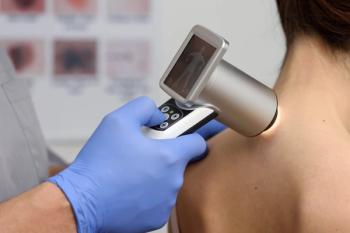
Patients Express Concerns Over Costs, Risks of Gene Therapies for Sickle Cell Disease
Research at the annual meeting of the American Society of Hematology evaluated patient and caregiver perspectives on gene therapies for sickle cell disease, which offer great potential but have had slow uptake.
Patients with sickle cell disease recently gained two new treatment options with the
The majority (65.3%) of respondents were patients with the rest being caregivers responding on behalf of a patient. Roughly one-third (32.7%) of responses were pediatric patients. Half (49.0%) of patients reported 3 or more visits to the emergency room in the last two years because of their sickle cell disease. Most patients reported acute (81.6%) and/or chronic (57.1%) pain and 46.9% said they experienced pain daily or weekly. Most (83.7%) of the patients were receiving disease-modifying therapy for their sickle cell disease.
While a majority (75.5%) of respondents said they were aware of gene therapies for sickle cell disease, 59.2% said they felt “not at all knowledgeable” or only “slightly knowledgeable” about gene therapies. The primary sources of their information about gene therapy were the medical team (54.1%) and media (40.5%).
The top concern about gene therapy was the risk of cancer (77.6%) followed by financial consequences (67.3%), infection (63.3%), unanticipated side effects (57.1%) and infertility (51.0%).
“Interestingly, 2 in 3 patients had concerns about the financial toxicity of gene therapy beyond the cost of the product itself, highlighting the short- and long-term burden of these therapies,” the researchers noted.
After the education portion of the survey, respondents said they felt more knowledgeable and perceived gene therapies as safer, but the interest in receiving treatment essentially remained unchanged with only equal proportions saying “no” or “yes” (24.5% each) to receiving gene therapies and the majority (51.0%) saying “maybe.”
“Understanding knowledge gaps and perceptions of gene therapy among patients/caregivers can inform how physicians approach conversations about treatment options and can help align research questions with patients’ needs,” the authors concluded.
A
In the base-case, NMAC/RIC-HID allo-HSCT accrued 22.6 discounted lifetime quality-adjusted life-years (QALYs) at a discounted cost of $1.0 million, gene therapy accrued 24.3 discounted lifetime QALYs at a discounted cost $2.5 million and standard care accrued 14.3 discounted lifetime QALYs at a discounted cost of $1.0 million.
The probabilistic sensitivity analysis determined NMAC/RIC-HID allo-HSCT was the most cost-effective strategy in 100% of the 10,000 iterations. The incremental net monetary benefit of NMAC-RIC-HID allo-HSCT was $810,000 compared with standard care and $1.3 million compared with gene therapy.
“With advancements in NMAC/RIC-HID allo-HSCT outcomes in adults with [sickle cell disease], allotransplantation offers a cost-effective therapeutic option for lifelong disease amelioration for people living with [sickle cell disease],” the authors concluded.
Newsletter
Get the latest industry news, event updates, and more from Managed healthcare Executive.





















































